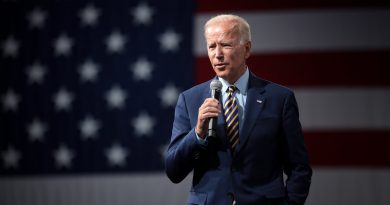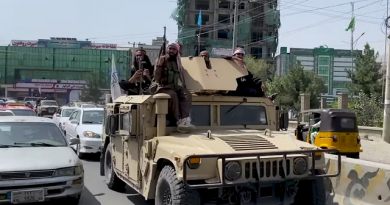OPINION: The Truth is Under Threat in Gaza
Yasmin Obeidallah
Staff Writer
“He, who targets the journalists, fears the truth” read the quote shown over a photograph of a man lovingly kissing his father’s head. That photo, posted on Instagram, was used to share the news of the death of journalist Hamza Al-Dahdouh, son of Al Jazeera’s Gaza Bureau Chief Wael Al-Dahdouh. According to Al Jazeera, Hamza and fellow journalist Mustafa Thuraya were killed by an Israeli missile strike in Khan Younis in the Gaza Strip on January 7. The targeting of Palestinian journalists, and by proxy their families, is ongoing in the siege of the Gaza Strip.
On October 25, Israeli airstrikes killed Wael’s wife, son, daughter, and grandson in an attack on the Nuseirat Refugee Camp where the family was seeking shelter. Al-Dahdouh, who had become the voice of Gaza and a beacon of Palestinian resilience, was himself injured in an Israeli attack on December 15. His colleague, video journalist Samer Abu Daqqa, was killed in the strike. These losses resonate with many in Gaza, where 25,000 people have been killed and more than 60,000 have been wounded by Israel’s indiscriminate assault on the Strip.
The journalists of Gaza have become a reluctant window into the devastation in Gaza, many through their social media accounts. Moataz Azaiza, Bisan Owda, and Plestia Alaqad are some of many who have put faces to the victims of the bombardment through their raw, unfiltered footage. Their daily realities serve as a firsthand account of the destruction and suffering in Gaza. Palestinians have come to rely on journalists like Azaiza and Owda to report the daily massacres committed against the people of Gaza.
The fate of journalists in Gaza matters to the international press, which has no means of independently reporting what is happening on the ground in Gaza themselves, says TIME. According to CNN, direct accounts from Palestinians are one of the most reliable ways for people to understand the horrors suffered in Gaza. This glimpse into life in Gaza has become a vital source of first-hand information, something that numbers and news reports cannot capture.
According to The Committee to Protect Journalists (CPJ), 76 Palestinian journalists and media workers have been killed since the beginning of the onslaught, with more injured or missing. CPJ describes Israel as having “an apparent pattern of targeting of journalists and their families.” CPJ’s emergencies director, Lucy Westcott, calls the number of journalistic deaths “unprecedented,” according to NPR.
Many journalists have eased their coverage of the bombardment due to fears of being targeted by Israel. Azaiza, who has amassed millions of followers on social media, recently evacuated to Qatar. He said he has had to “evacuate for a lot of reasons you all know some of it but not all of it,” according to Al Jazeera. CPJ’s Middle East and North Africa program coordinator, Sherif Mansour, further told TIME that “infrastructure and protection and safety does not exist” for journalists in Gaza.
Not only do Palestinian journalists put themselves and their families at risk to share daily life in Gaza with the world, reporting in the enclave has been severely restricted under Israeli aggression, due to repeated communications blackouts and a lack of food and housing, says Reuters. Notably, many of the journalists documenting Gaza’s horrors speak English, not Arabic, in their videos in an attempt to capture the attention of those worldwide. Palestinians in Gaza are forced to mourn, suffer, and die in front of a camera lens so the world can empathize with them.
While many reporters in Gaza who have been threatened, injured, or suffered loss have returned to work, others must decide whether to continue sharing the truth with a world that does not seem to be listening or to try and save themselves. For journalist Ismail Jood, the choice was simple. He announced the end of his press coverage in Gaza on Instagram on January 10, telling his followers that “seeking safety within family is a better option than seeking coverage for a world that doesn’t know the meaning of humanity and compassion.”
Though Israeli forces have maintained that they do not target journalists, it has been established that they have killed people clearly identified as members of the press. A May report by CPJ found that Israeli troops have killed at least 20 journalists in the last 22 years, and none have been charged or held accountable, says Reuters. At the beginning of their attacks on the Gaza Strip, the Israeli military warned international organizations that they could not guarantee the safety of their journalists operating in Gaza. Journalists have long been vulnerable targets of Israel’s aggression, including beloved Al Jazeera reporter Shireen Abu Akleh, who was fatally shot by an Israeli sniper while covering a raid on the Jenin Refugee Camp in the Occupied West Bank in May 2022. Israel has repeatedly been labeled as a state that values the democratic idea of free press, but their continuous targeting of Palestinian journalists hinders their ability to establish and share the truth.
Image courtesy of Getty Images




Excellent piece. Very articulate and informative of the tragedies being committed by Israel